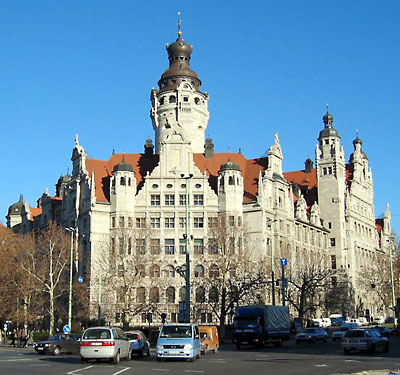
Emplois pour médecins en Sachsen - Allemagne
Emplois pour médecins en Sachsen - Allemagne
| DOCTEUR | Résident | Spécialiste | Primaire |
|---|---|---|---|
| Médecine générale | 0 | 0 | 0 |
| Médecine interne | 1 | 2 | 2 |
| Pneumologie | 0 | 0 | 0 |
| Pathologie cardio-vasculaire | 1 | 0 | 1 |
| Gastro-entérologie et hépatologie | 0 | 0 | 0 |
| Endocrinologie, maladies métaboliques | 0 | 1 | 0 |
| Rhumatologie | 0 | 0 | 0 |
| Angiologie | 0 | 0 | 0 |
| Néphrologie | 0 | 0 | 0 |
| Hématologie | 0 | 0 | 0 |
| Cancérologie | 0 | 0 | 0 |
| Gériatrie | 0 | 0 | 0 |
| Neurologie | 0 | 0 | 0 |
| Dermatologie et vénéréologie | 0 | 0 | 0 |
| Pédiatrie | 0 | 0 | 0 |
| Psychiatrie | 4 | 1 | 0 |
| Rééducation et réadaptation fonctionnelles | 0 | 0 | 0 |
| Anesthésiologie-Réanimation chirurgicale | 0 | 0 | 0 |
| Chirurgie générale | 1 | 1 | 1 |
| Chirurgie vasculaire | 0 | 0 | 0 |
| Chirurgie cardiaque | 0 | 0 | 0 |
| Chirurgie thoracique et cardiovasculaire | 0 | 0 | 0 |
| Chirurgie infantile | 0 | 0 | 0 |
| Chirurgie orthopédique et traumatologie | 0 | 0 | 0 |
| Neurochirurgie | 0 | 0 | 0 |
| Ophtalmologie | 0 | 0 | 0 |
| Gynécologie — obstétrique | 0 | 0 | 0 |
| Oto-rhino-laryngologie | 0 | 0 | 0 |
| Urologie | 0 | 0 | 0 |
| Radiodiagnostic et imagerie médicale | 0 | 0 | 0 |
| Oncologie radiothérapique | 0 | 0 | 0 |
| Anatomie et cytologie pathologiques | 0 | 0 | 0 |
| Médecine d´urgence | 0 | 0 | 0 |
| Médecine du travail | 0 | 0 | 0 |
| Pédo-psychiatrie | 0 | 0 | 0 |
| Médecine dentaire | 0 | 0 | 0 |
| RMO | 0 | 0 | 0 |
| Médecine psychosomatique | 0 | 0 | 1 |
| Médecine nucléaire |

Interested in learning more about Sachsen? Click below to read the description and find out more about:
Sachsen - Allemagne

Interested in learning more about Sachsen? Click below to read the description and find out more about:
Located in the middle of an erstwhile German-speaking part of Europe, the history of the state of Saxony spans more than a millennium. It has been a medieval duchy, an electorate of the Holy Roman Empire, a kingdom, a republic from 1918 to 1952 and then again from 1990.



Leipzig Rathaus, Johannapark City-Hochhaus Leipzig, Leipzig old town hall


Dresden Zwinger courtyard, Dresden banks of the Elbe, Dresden Theaterplatz


Battle of the Nations Monument, Moritzburg Palace
Above all it is Saxony's exquisite artistic and cultural heritage that is appreciated by visitors from around the world. Music festivals, plays and internationally acclaimed art collections dominate culture in Saxony. The region's musical heritage is associated with venues such as the Semper Opera House in Dresden, the Gewandhaus concert hall in Leipzig and the theatre in Chemnitz and also with the names of famous composers such as Johann Sebastian Bach, Richard Wagner, Robert Schumann and Carl Maria von Weber. St. Thomas's choir, Dresden's Kreuzchor boys' choir, Leipzig's Gewandhaus Orchestra and the Dresden State Orchestra are among the world's most famous ensembles.


Semper Opera House in Dresden


Gewandhaus concert hall in Leipzig


The theater in Chemnitz
Some of Saxony's towns and cities can boast market squares that are up to 1,000 years old, many more have an impressive architectural heritage and vibrant cultural life. Saxony's international reputation is also founded on its rich craftwork traditions, including wood carving in the Erzgebirge Mountains, musical instrument making in the Vogtland, Meissen porcelain, Plauen lace and Glashütte watches.

Wood carving in the Erzgebirge Mountains


Vogtland music instruments


Meissen Porcelain
Saxony also offers excellent opportunities for spa treatments and health and wellness breaks in its long-established spas and health resorts.
The cooking here is also influenced by its history. In the flourishing cities of Dresden and Leipzig, recipes have been influenced by access to luxurious and extravagant ingredients. Likewise, in the Ore Mountain region (Erzgebirge), historically a very poor region, residents had to make due with basic, inexpensive ingredients, such as potatoes, quark, and flax seed. As a result, a great variety of foods and dishes are considered Saxon.
A very important tradition in Saxony is coffee and cake. It was in Leipzig that the first coffee bar in Germany was opened. The Saxons were the first in Germany to add cake to their coffee drinking - a tradition that has spread throughout Germany and has become part of its culture. Also found in Saxony is a great variety of cakes, pastries, and baked goods.
Saxony has a huge beer tradition. The most well-known beers of the region are "Radeberger" and "Wernesgrüner." Many beers from the state are exported to countries around the world.




Buttermilchgetzen, Dresdner Stollen, Eierschecke
Microchip makers near Dresden have given the region a nickname of "Silicon Saxony". The publishing and porcelain industries of the region are well known, although their contributions to the regional economy are not significant. The state government is attempting to develop tourism, notably in the lake district of Lausitz.





Meissen, Freiberg


















